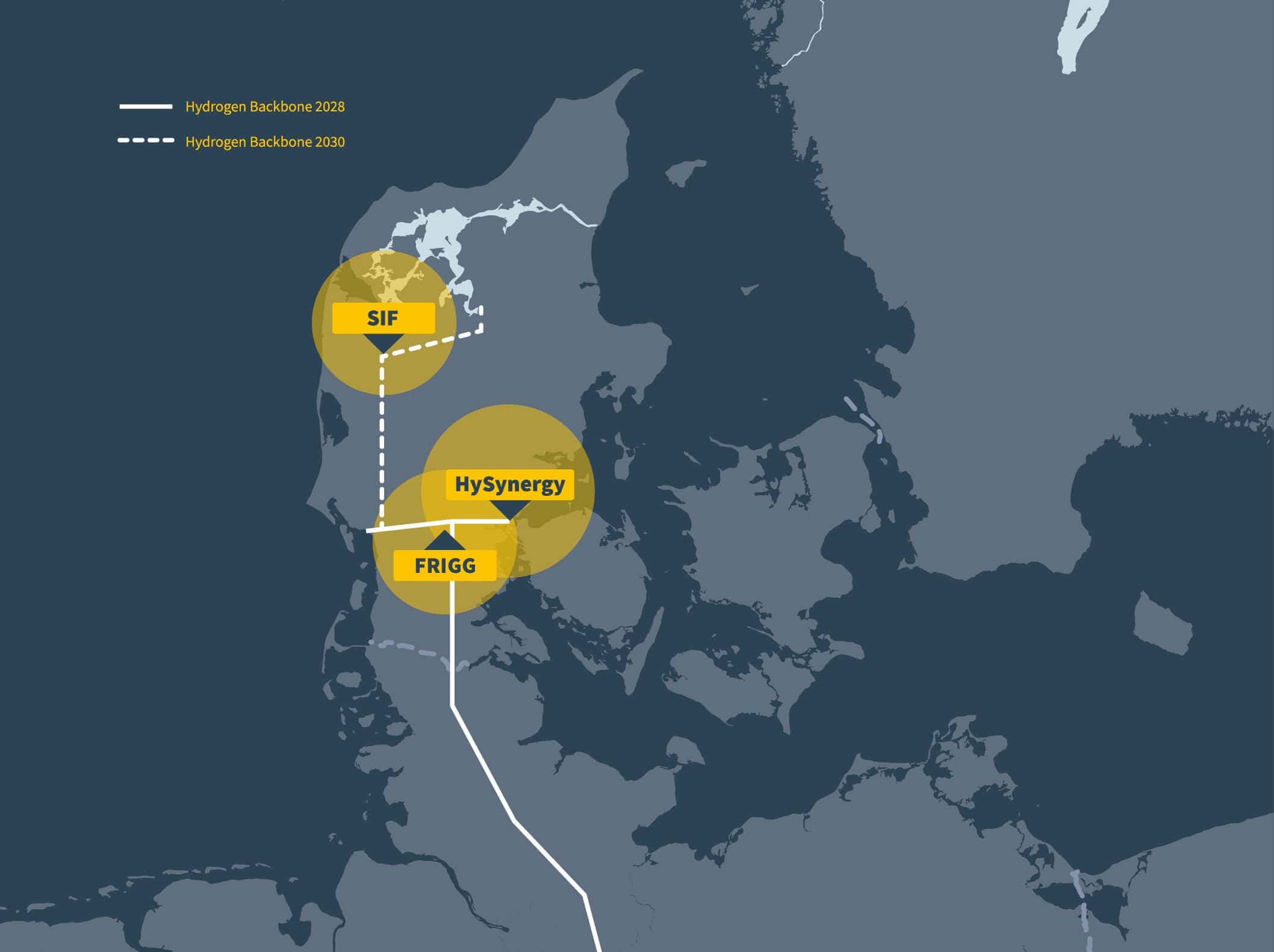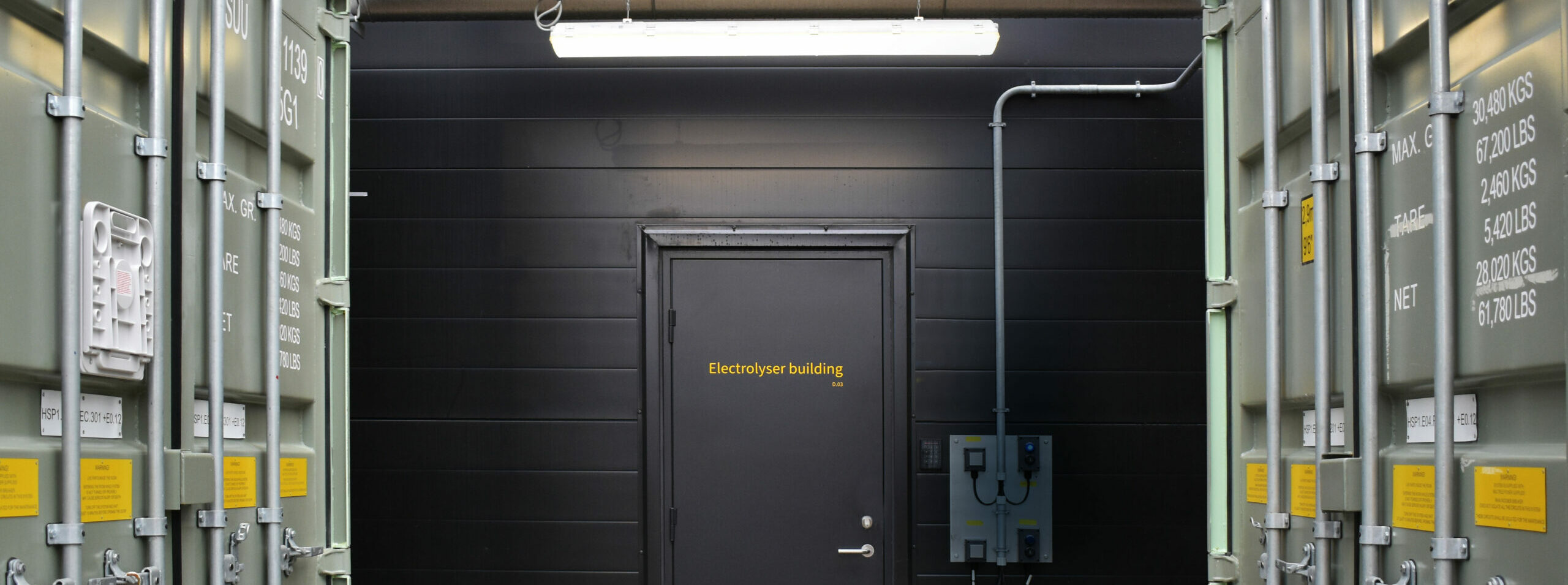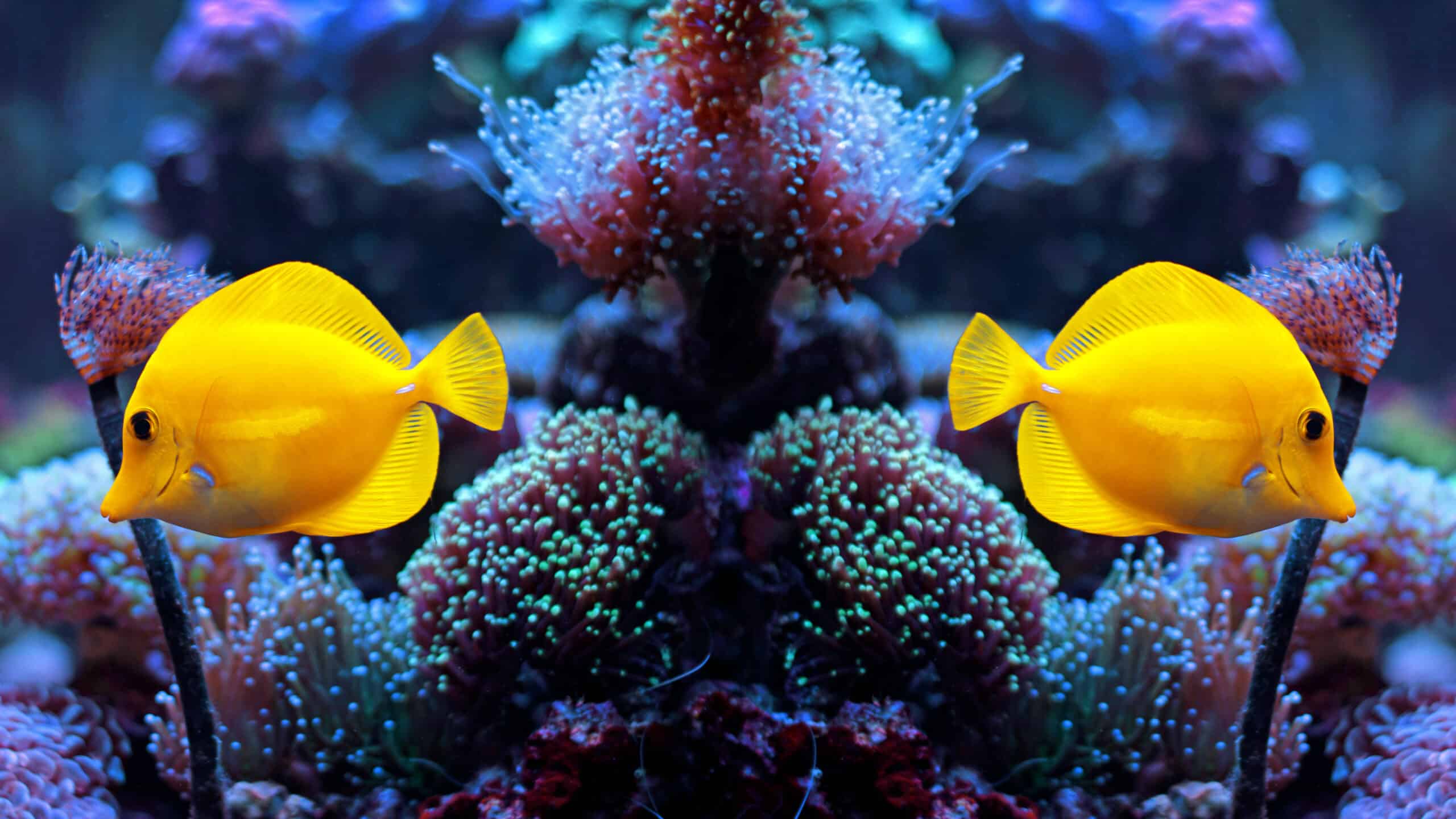Power-to-Hydrogen
Power-to-X (PtX) refers to the conversion of electricity into another form of energy carrier or product. A technology used to store excess electricity from renewable sources and balance the grid. At Everfuel, we replace ‘X’ with ‘H’ (PtH) by using renewable energy to split water into hydrogen and oxygen through an electrochemical process called electrolysis. The hydrogen is used by customers either directly or further processed as feedstock for new products.
As an independent green hydrogen producer, we supply via pipeline and distribution trailers, and build electrolysers in strategic locations with access to renewable energy and hydrogen off-take routes. Secondary value streams include by-products such as oxygen and heat. Excess heat can be applied in district heating systems, while the oxygen can be used in various processes such as waste management
HySynergy - our flagship project
The 20 MW HySynergy facility is among Europe’s largest electrolysers. It's built to demonstrate and scale green hydrogen production, storage, and distribution together with our partner and main offtaker, Crossbridge Energy refinery. Our goal is to supply green hydrogen for industry and mobility from our onsite distribution centre via our hydrogen trailers. The hydrogen produced significantly reduces the carbon footprint of the adjacent refinery and is a large contributor to the Danish CO2 reduction targets.
HySynergy will be built in phases according to Crossbridge Energy’s increasing need for green hydrogen:
Phase I 20 MW operational in 2024
Phase II 300 MW | First 100 MW has received EUR 33.1 million in funding
Highlight reel:
Everfuel has a joint venture (JV) with Hy24, the manager of the world’s largest hydrogen infrastructure fund. The JV’s purpose is to develop, scale, and co-finance electrolyser capacities starting with HySynergy, of which Everfuel owns 51% and Hy24 owns 49%.
The project is supported with EUR 6.5 million from the Danish Energy Agency and EUR 3.8 million in European funding via H2Bus
Project Frigg
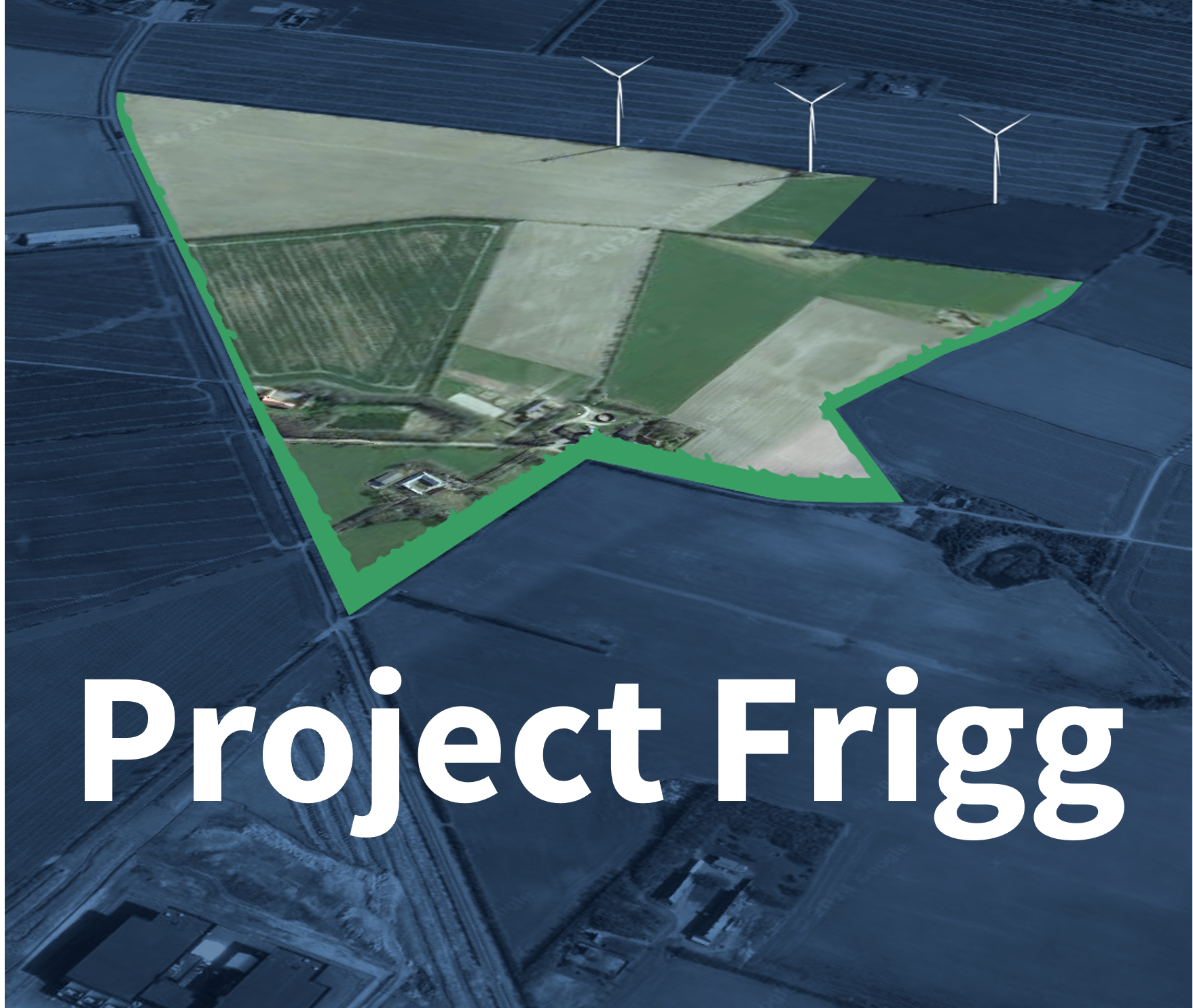
Frigg aims to develop up to 2 GW of green hydrogen production at Revsing Energy Park, Denmark. With secured land and ongoing development, Frigg is poised to supply hydrogen via the coming hydrogen backbone to industrial customers in Germany, supporting local employment in Vejen municipality and reducing CO2 emissions in Europe.
Frigg has potential for direct connection to greenfield local renewable energy production from solar and wind developed by Everfuel or partners, as well as integration with local district heating. Project Frigg is the intended supply source for the undisclosed German LoI customer and for other future industrial offtakers.
Frigg is located on the “Lower T” in the intersection between the North-South and East-West hydrogen backbone, which is expected to be the first section to be built and operational by start of the next decade as announced by the Danish TSO, Energinet. Frigg is positioned to scale according to market demand. Additionally, HySynergy is also expected to be connected to the Lower T-pipeline, enabling critical balancing and redundancy-supply functions between the two facilities.
The realisation of Frigg is subject to successful continued development and inclusion of the project by Vejen municipality.
Everfuel's three projects HySynergy, Sif and Frigg are located in the DK1 power zone in Jutland, Denmark. The competitive advantage of green hydrogen production in DK1 is documented in an analysis conducted by Aurora Energy Research, on behalf of Hy24 and Everfuel.
Project Sif
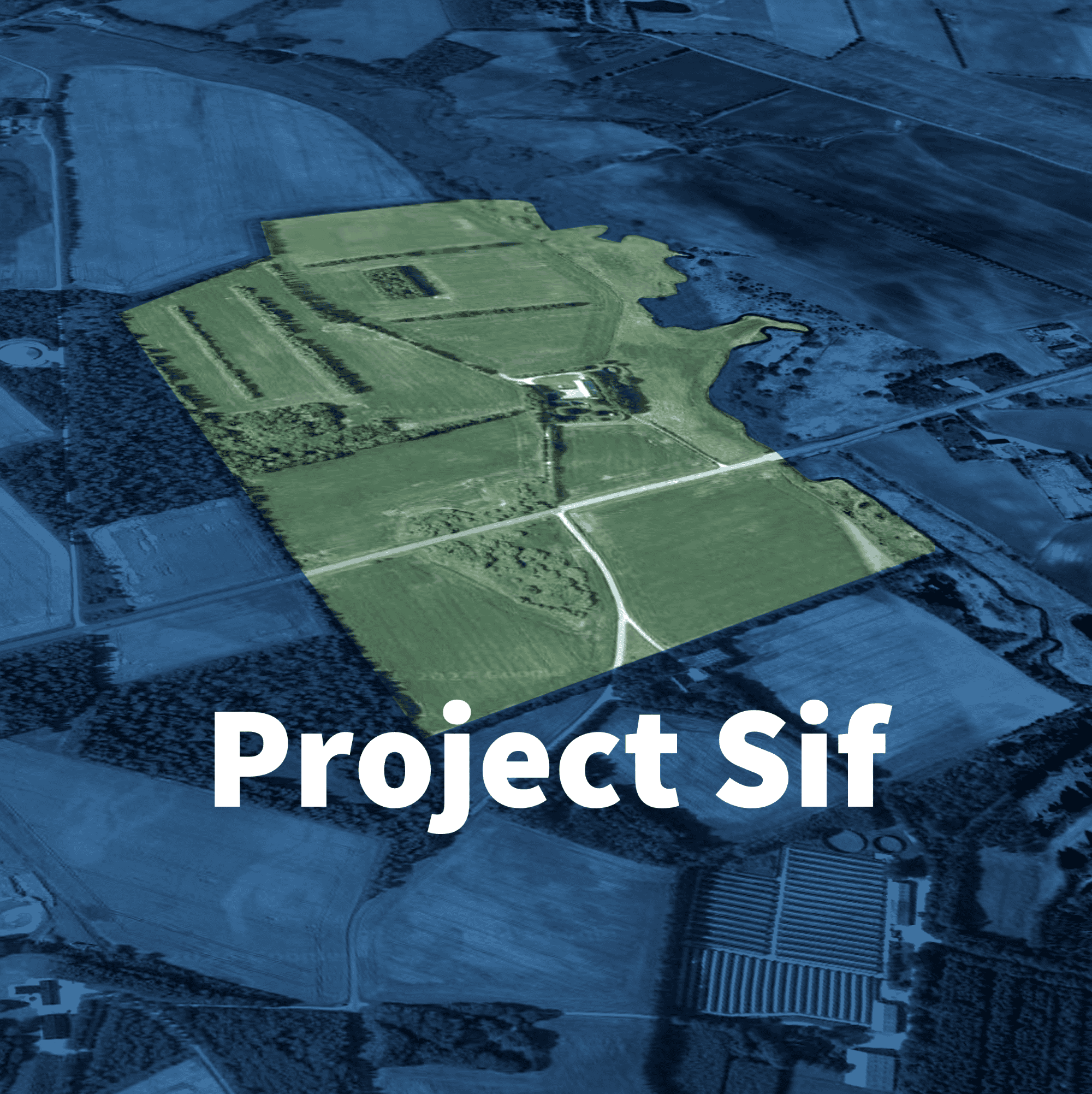
Everfuel prioritises hydrogen production sites suitable for phased scaling, access to competitive renewable energy, and proximity to the forthcoming hydrogen backbone. Project Sif, located in northwest Denmark, has the potential for over 1 GW electrolyser capacity and a potential for a hydrogen pipeline connection to Germany. Sif also has the potential to be connected to local renewable power generation.
Positioned for the Hydrogen Backbone
